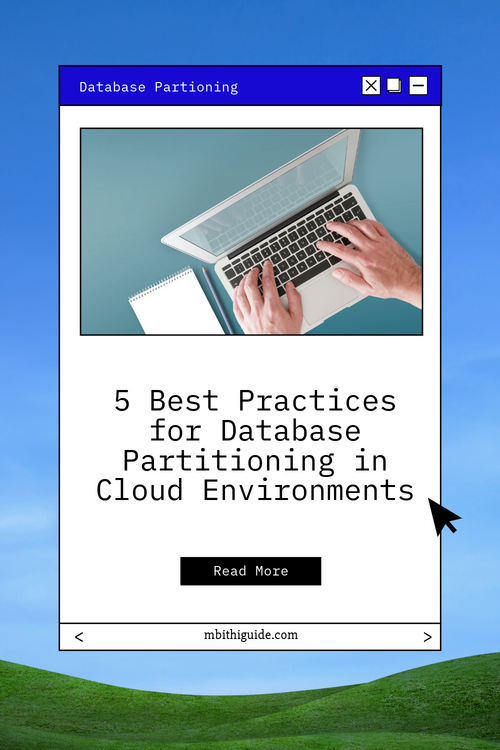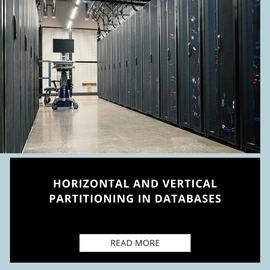Introduction
Artificial Intelligence (AI), Machine Learning (ML), Statistics, and Data Mining have become buzzwords in today’s technology-driven world. With the increasing reliance on data-driven decision-making, organizations are exploring new ways to harness the power of these fields to improve business outcomes.
However, the overlap and interchangeability of these terms often confuse. This article will delve into the differences between AI, ML, statistics, and data mining and how they complement and differ.
By the end of this article, you will better understand these fields, their applications, and their significance in the world of data analytics.
What is Artificial Intelligence (AI)?
Artificial Intelligence (AI) refers to the ability of computer systems to perform tasks that typically require human intelligence, such as perception, reasoning, learning, decision-making, and natural language processing. AI is a broad field that encompasses several subfields, including expert systems, robotics, natural language processing, and computer vision.
AI has numerous applications across various industries, including healthcare, finance, transportation, and entertainment.
For instance, AI-powered chatbots are used in customer service to assist customers with their inquiries, while in the healthcare industry, AI can help diagnose diseases and improve patient outcomes. In the finance industry, AI can help identify fraudulent transactions and assess credit risks, while in transportation, it can be used to optimize traffic flow and reduce congestion.
AI also has rule-based systems, decision trees, neural networks, and deep learning techniques. These techniques enable AI to learn from data and improve its performance over time.
As AI continues to evolve, it has the potential to transform various industries, making them more efficient, productive, and profitable.
Examples of AI Programs
There are numerous examples of AI programs that are currently being used or developed, some of which include:
- Siri and Alexa: These virtual assistants use natural language processing to understand and respond to user requests.
- IBM Watson: This AI-powered platform is used in various industries, including healthcare and finance, to analyze large amounts of data and provide insights.
- Google Translate: This application uses machine learning algorithms to translate text from one language to another.
- Self-driving cars: Companies like Tesla, Google, and Uber are developing self-driving technology that uses AI to navigate roads and make driving decisions.
What is Machine Learning?
Machine Learning (ML) is a subset of AI that involves the development of algorithms that can learn from data and improve their performance over time without being explicitly programmed. ML algorithms are designed to recognize patterns in data, make predictions, and automate decision-making processes.
Several types of ML algorithms exist, including supervised, unsupervised, and reinforcement learning.
Supervised learning involves training an algorithm on labeled data to predict new, unseen data. On the other hand, unsupervised learning involves training an algorithm on unlabeled data to identify patterns and relationships in the data.
Reinforcement learning involves training an algorithm to learn by interacting with an environment and receiving feedback through rewards or penalties.
ML has numerous applications across various industries, including healthcare, finance, e-commerce, and marketing. For instance, ML can be used in the healthcare industry to develop predictive models for disease diagnosis and treatment.
In contrast, it can be used in finance to detect fraudulent transactions and assess credit risks. In e-commerce, ML can be used to personalize product recommendations and improve customer experience, while in marketing, it can be used to optimize ad targeting and campaign performance.
ML techniques include decision trees, linear regression, neural networks, and deep learning. Deep learning, in particular, has revolutionized the field of ML by enabling algorithms to process and analyze vast amounts of complex data, such as images and videos.
As ML continues to evolve, it has the potential to transform various industries, making them more efficient, accurate, and profitable.
However, its effectiveness is highly dependent on the quality and quantity of data available for training and the expertise of data scientists and ML engineers in designing and implementing ML solutions.

What is Statistics?
Statistics is a branch of mathematics that deals with data collection, analysis, interpretation, presentation, and organization. It makes sense of complex data sets and draws conclusions about populations based on sample data.
There are two main branches: descriptive statistics and inferential statistics. Descriptive statistics involves summarizing and describing the characteristics of a data set, such as mean, median, mode, and standard deviation.
Inferential statistics, on the other hand, involve making inferences about a population based on sample data, such as hypothesis testing and confidence intervals.
Statistics has numerous applications across various industries, including healthcare, finance, sports, and social sciences. For instance, in the healthcare industry, statistics can be used to analyze clinical trial data and determine the efficacy of a new drug or treatment.
In finance, statistics can assess portfolio risk and predict stock prices. In sports, statistics can be used to evaluate player performance and make strategic decisions. In contrast, in social sciences, statistics can be used to analyze survey data and test hypotheses about human behavior.
Statistics techniques include regression analysis, hypothesis testing, and analysis of variance (ANOVA). These techniques enable statisticians to draw meaningful conclusions from data and accurately predict future outcomes.
As data-driven decision-making becomes increasingly important, the demand for statisticians is expected to grow. By combining statistical techniques with AI and ML algorithms, organizations can gain valuable insights from data and make more informed decisions, leading to improved business outcomes.
What is Data Mining?
Data Mining is the process of discovering patterns, trends, and insights from large data sets. It involves using statistical and computational techniques to extract knowledge from data and transform it into an understandable structure for further use. Data mining is an interdisciplinary field involving computer science, statistics, and machine learning techniques.
Data mining techniques can be used in various industries, including healthcare, finance, marketing, and retail. For instance, in healthcare, data mining can be used to identify high-risk patients and develop personalized treatment plans.
Data mining can identify fraudulent transactions and improve credit scoring models in finance. In marketing, data mining can be used to identify customer segments and develop targeted marketing campaigns. In retail, data mining can be used to analyze consumer behavior and optimize pricing strategies.
Data mining techniques include clustering, association rule mining, and classification. Clustering involves grouping similar data points into clusters based on their characteristics, while association rule mining involves identifying relationships and dependencies between different variables in a data set. Classification involves categorizing data points into predefined classes based on their features.
As the amount of data being generated grows, data mining has become essential for organizations to gain insights and make data-driven decisions. However, the effectiveness of data mining is highly dependent on the quality and quantity of data available, as well as the expertise of data scientists in designing and implementing data mining solutions.
Key Differences Between AI, ML, Statistics, and Data Mining
Although Artificial Intelligence (AI), Machine Learning (ML), Statistics, and Data Mining share some similarities, some key differences exist between these fields.
AI is a broad field that includes various techniques for building intelligent systems that can perform tasks that typically require human-level intelligence, such as understanding natural language and recognizing images.
ML is a subset of AI that involves developing algorithms that can learn from data and improve performance over time without being explicitly programmed. In contrast, Statistics is a branch of mathematics that deals with data collection, analysis, and interpretation. At the same time, Data Mining is the process of discovering patterns, trends, and insights from large data sets.
One of the main differences between these fields is their focus. AI is concerned with building intelligent systems, while ML is focused on developing algorithms that can learn from data.
On the other hand, statistics is focused on making sense of data and drawing conclusions about populations based on sample data. Data Mining, meanwhile, is focused on discovering patterns and insights from data.
Another difference between these fields is their techniques. AI techniques include rule-based systems, expert systems, and natural language processing, while ML techniques include decision trees, neural networks, and deep learning.
Statistics techniques include regression analysis, hypothesis testing, and analysis of variance (ANOVA), while Data Mining techniques include clustering, association rule mining, and classification.
AI has numerous applications across various industries, including healthcare, finance, and e-commerce, while ML is widely used in healthcare, finance, and marketing. Statistics has applications across various industries, including healthcare, finance, sports, and social sciences, while Data Mining has applications in healthcare, finance, marketing, and retail.
While there are some similarities between AI, ML, Statistics, and Data Mining, these fields have distinct focuses, techniques, and applications.
Understanding the differences between these fields is essential for organizations seeking to leverage data and AI technologies to gain insights and make data-driven decisions.
Summary of the differences between AI, ML, Statistics, and Data Mining
Here’s a table summarizing the key differences between AI, ML, Statistics, and Data Mining
| Field | Focus | Techniques | Applications |
| Artificial Intelligence (AI) | Building intelligent systems | Rule-based systems, expert systems, NLP | Healthcare, finance, e-commerce, etc. |
| Machine Learning (ML) | Developing algorithms that can learn from data | Decision trees, neural networks, deep learning | Healthcare, finance, marketing, etc. |
| Statistics | Making sense of data | Regression analysis, hypothesis testing, ANOVA | Healthcare, finance, sports, social sciences, etc. |
| Data Mining | Discovering patterns and insights from data | Clustering, association rule mining, classification | Healthcare, finance, marketing, retail, etc. |
Conclusion
Artificial Intelligence (AI), Machine Learning (ML), Statistics, and Data Mining are all important fields concerned with making sense of data and developing intelligent systems that can learn and improve over time.
While these fields share some similarities, such as their focus on data and their use of computational techniques, they also have distinct differences in their focus, techniques, and applications.
AI is concerned with building intelligent systems, while ML is focused on developing algorithms that can learn from data. Statistics is focused on making sense of data and drawing conclusions about populations based on sample data, while Data Mining is focused on discovering patterns and insights from data. Each of these fields has its own set of techniques and applications that can be used to address different business problems across various industries.
Understanding the differences between AI, ML, Statistics, and Data Mining is important for organizations seeking to leverage data and AI technologies to gain insights and make data-driven decisions.
By using the right techniques and tools from these fields, organizations can gain a competitive edge by making more informed decisions, improving processes, and delivering better products and services.







